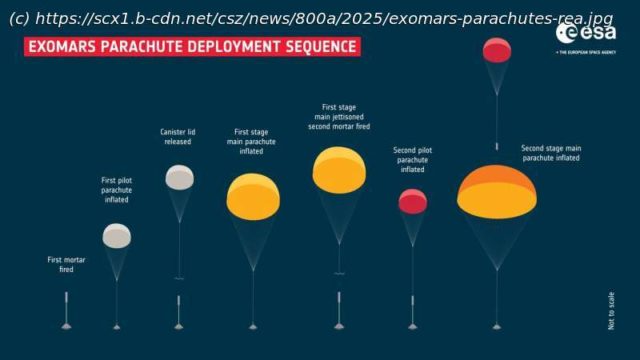The most complex parachute system to ever deploy on Mars has successfully slowed down an ExoMars mock-up landing platform for a safe touchdown on Earth.
The most complex parachute system to ever deploy on Mars has successfully slowed down an ExoMars mock-up landing platform for a safe touchdown on Earth.
A stratospheric helium balloon lifted a dummy descent module and released it above the Arctic Circle at an altitude of nearly 30 km, triggering the deployment of two large parachutes from their doughnut bags.
« We are happy to confirm that we have a parachute design that can work on Mars—an ambitious system with the largest parachute ever to be flown outside Earth », says Luca Ferracina, ESA’s ExoMars Entry Descent and Landing Module system engineer.
This high-altitude drop test campaign took place at the Swedish Space Corporation’s Esrange Space Center in Kiruna, northern Sweden, on 7 July.
To match the combination of density and speed that the capsule will experience when diving into the thin Martian atmosphere—about 1% of the density of Earth’s atmosphere at sea level—the balloon had to fly very high.
The ExoMars parachutes dropped from an altitude of 29 km, or about three times the altitude where commercial aircraft cruise.
The dummy capsule then went into free-fall for about 20 seconds, reaching almost the speed of sound, before deploying the parachutes in turn.
« The combination of velocity and low atmospheric density in this test is exactly the same as what the parachutes will experience on Mars. Testing on Earth is a way to gain confidence and confirm that all the elements perform as expected », explains Ferracina.






